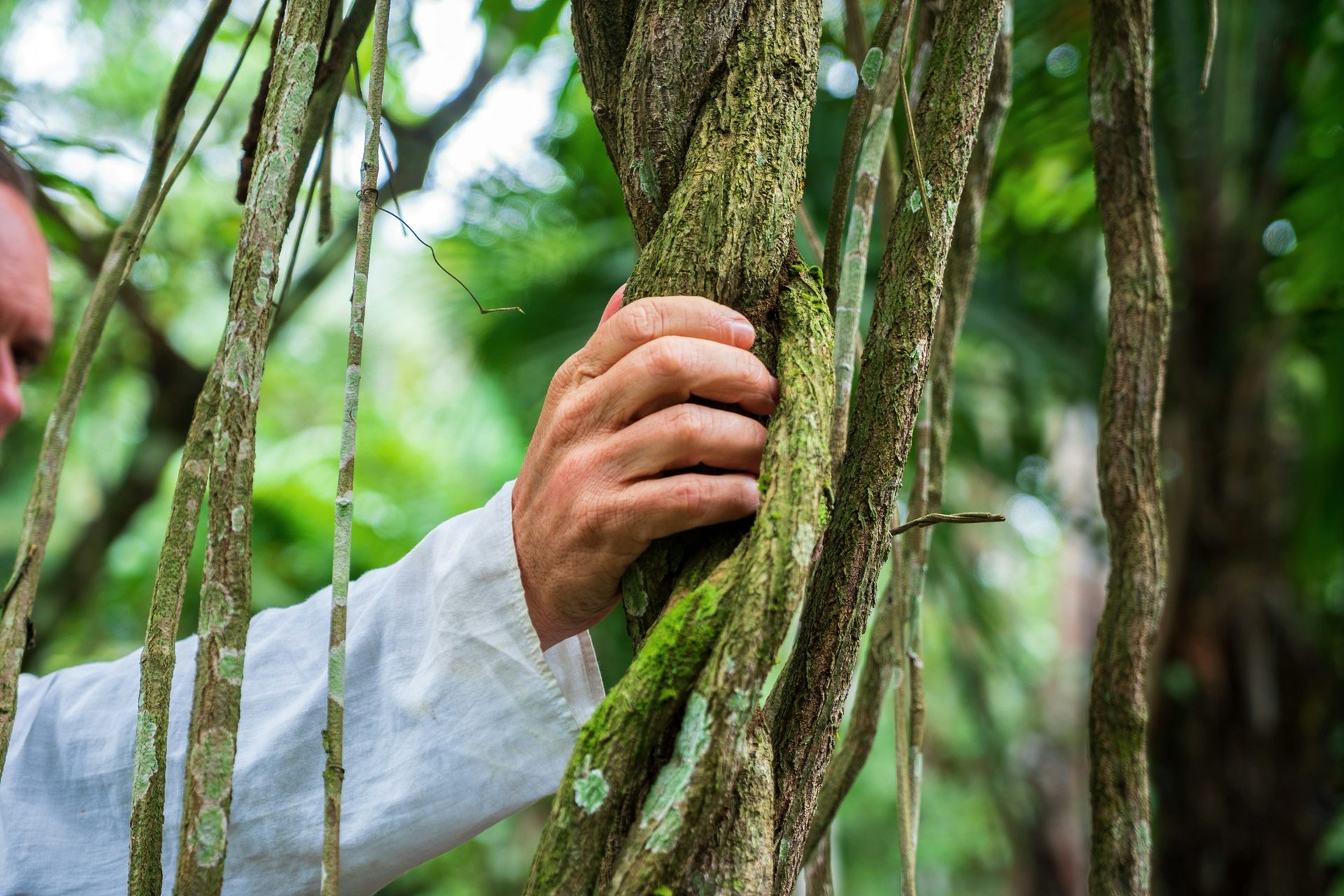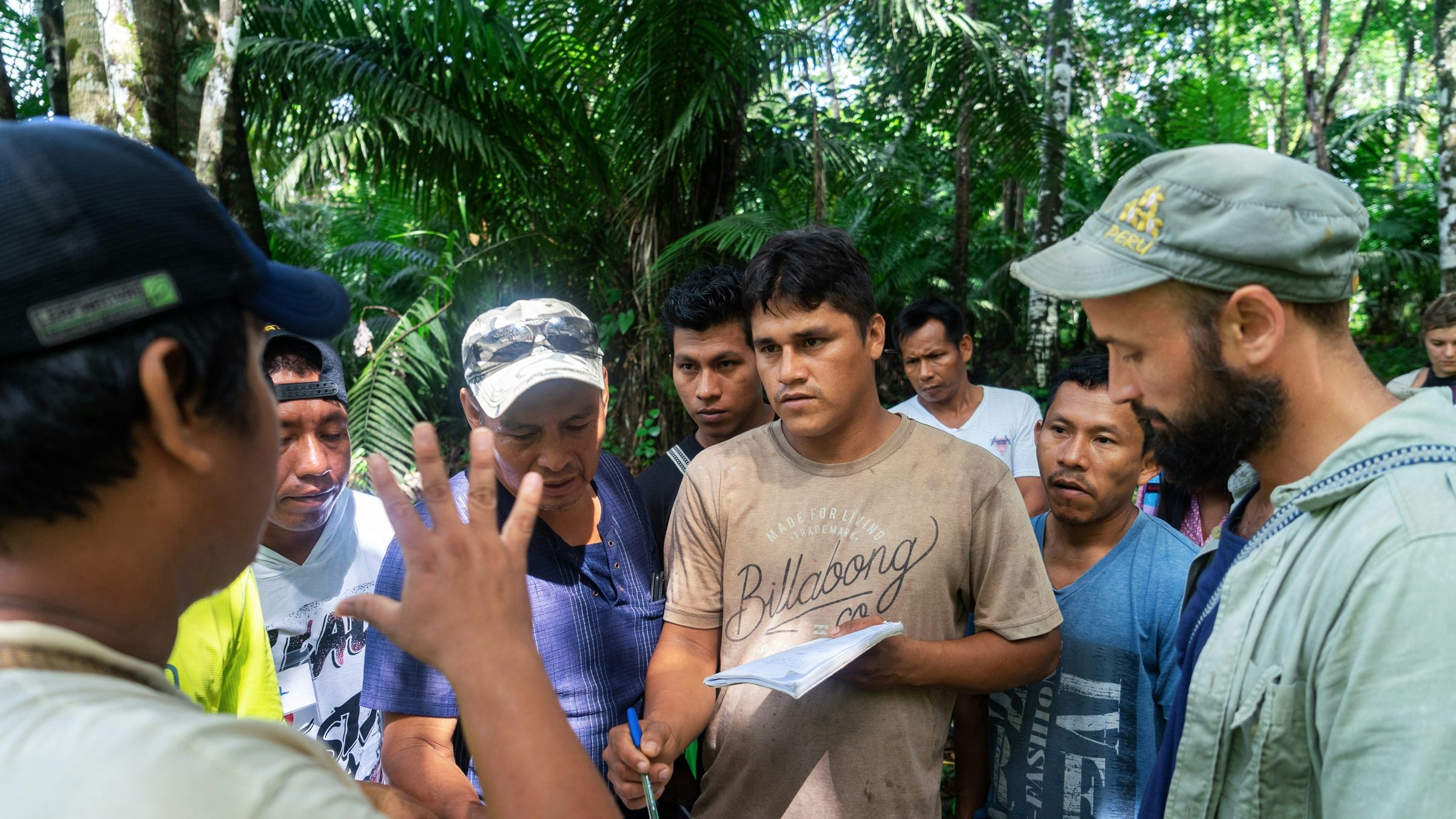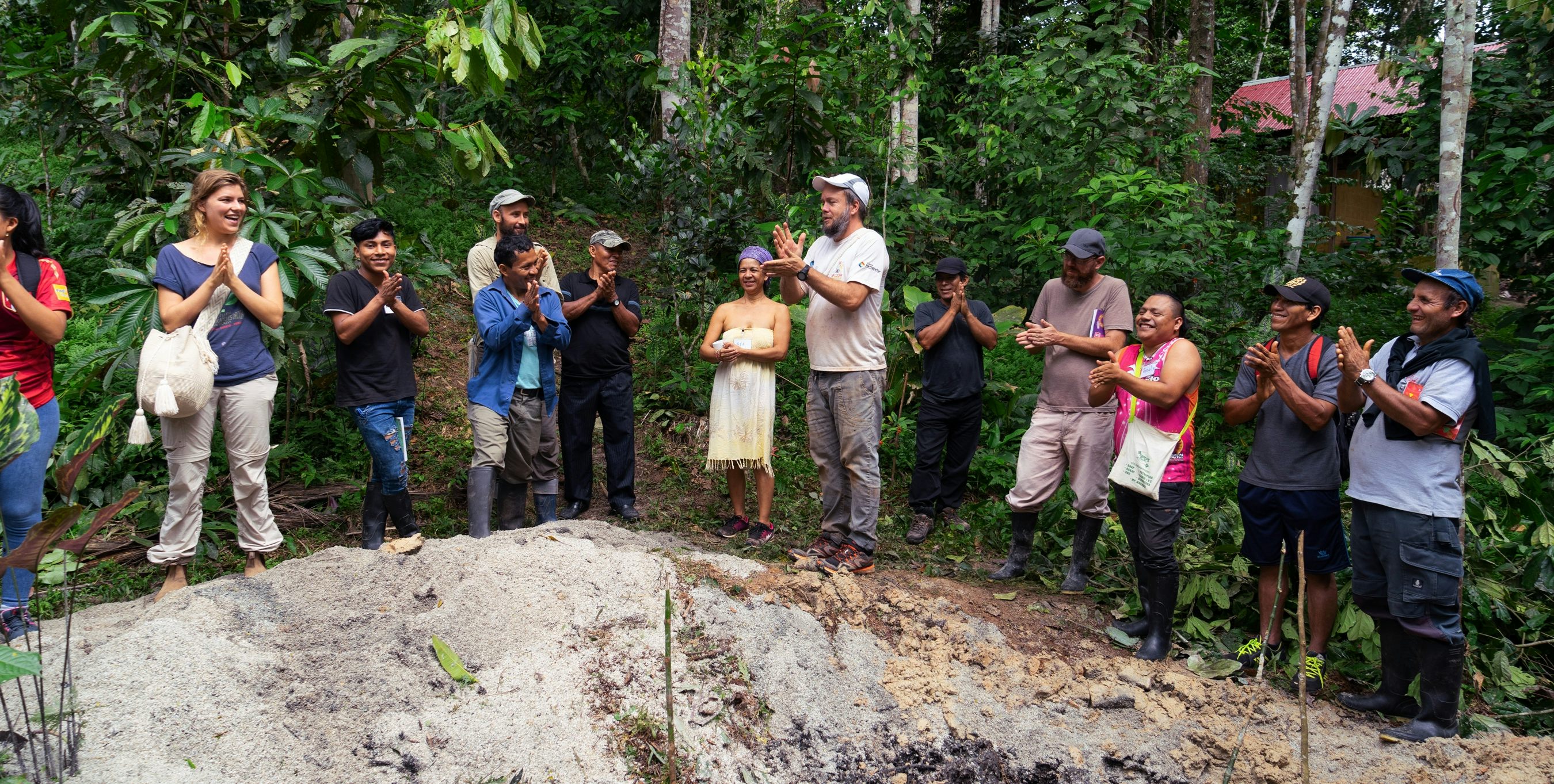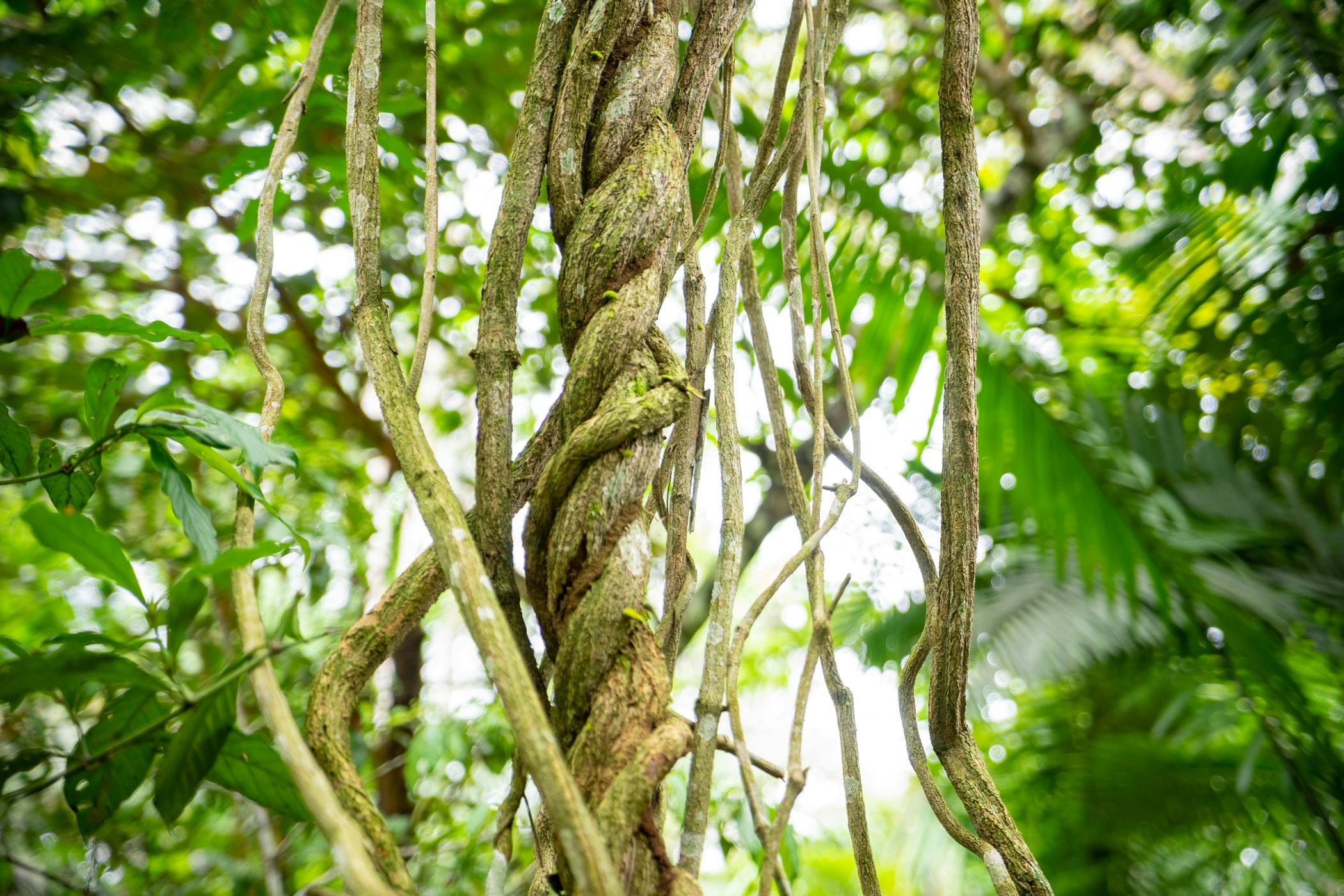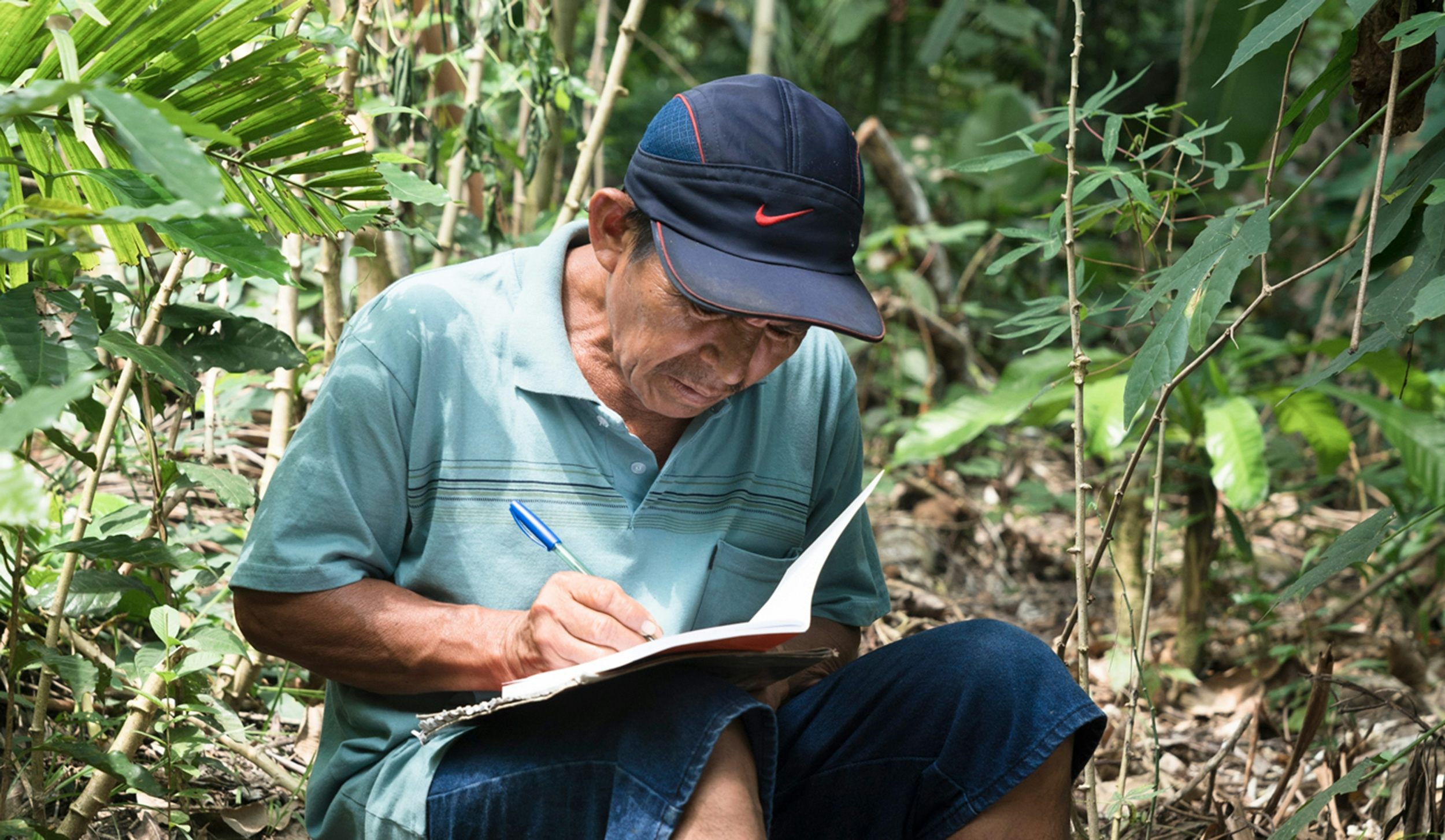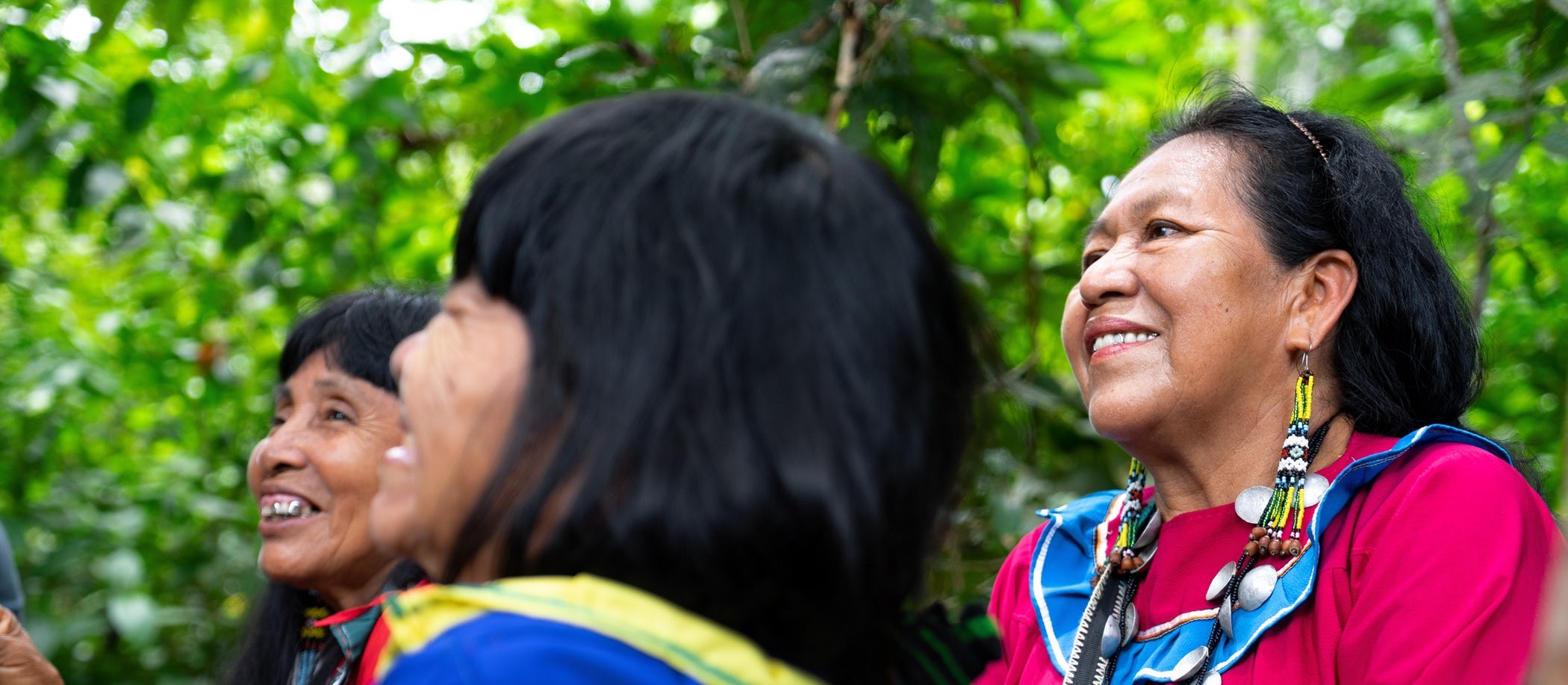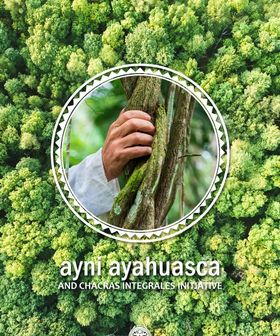Celebrating Life in Reciprocity
In the Quechua language, the most widely spoken indigenous language of Peru, Ayni is the central principle that guides all aspects of daily life. Ayni closely translates to interconnectedness and reciprocity. It is the recognition that individuals and communities are woven into a net of interdependence that entails mutual responsibility for the wellbeing of each other.
A life lived in reciprocity and interdependence emerges from the practical knowledge that any given being does not exist in isolation, but is in continuous dialogue with the rest of the natural world. As members of this organic community, we are woven into a net of inter-being that entails mutual responsibility. Our personal lives are linked to the health of the entire biosphere. Today, a new culture is evolving - a culture connected to the world of sacred plant medicines, guided and inspired by indigenous people of the Amazon rainforest.
Ayni fosters the exchange of loving-kindness, wisdom, and beneficent actions between individuals, the environment, the elements, the spirits of nature, and transcendent forces beyond our comprehension. Ayni inspires us to support each other; I help you today, and tomorrow you may help me. With Ayni perpetually underlying our thoughts and deeds, we are able to tap in more easily to the sacred matrix of life - the mysterious, sentient, and benevolent ordering principle that exists just beyond the surface of normal consciousness.
The Shipibo people, like many other indigenous communities of the Amazon rainforest, perceive of and relate to the rainforest as a diverse community of sentient beings. Plants and animals, trees and insects, winds, rivers, and all of nature’s phenomena are interwoven and constantly in communication with humans, both subtly and directly.
Indigenous people have lived sustainably since the beginning of humankind and have passed on sustainable ways of living from generation to generation. With the advent of globalization, continuous attacks on their traditional way of life, loss of indigenous lands, deforestation, and pollution, their knowledge is rapidly being lost and invalidated.
Over the course of hundreds of years, people in more developed countries and societies have lost contact with an instinctive knowing and deeper sense of belonging. Alienated from the natural world, our true identity and deepest nature has been obscured. However, people across the world are beginning to remember that we are not separate from nature at all; rather, we are beings in process, evolving in tandem with the rhythms and cycles of all life.
The Amazon Rainforest: Heart of the World, Health of the Earth
The Amazon Rainforest is crucial to life on Earth as we know it; it contains over half of the planet's remaining rainforest habitat, holds 25% of the world's carbon, and produces one-fifth of the planet's freshwater. It is the world's premier bio-cultural diversity hotspot, home to scores of unique cultures, worldviews, languages, and countless species of flora and fauna.
As multinational corporate agribusiness and extractive industries accelerate deforestation with fires, pollution, and land degradation, the Amazon approaches a tipping point, facing irreversible environmental change with cascading effects. This will impact our global ecosystem forever.
As guardians of the forest, indigenous communities rely upon the wellbeing of the forest in order to derive food, shelter, water, and medicine. Studies reveal that indigenous-managed lands assume quantitatively higher rates of carbon sequestration. In other words, where land is occupied by people who depend on it, it is more likely that this land will be stewarded and defended from the extractive presence of international business. The future of the Amazon and the world relies upon forest people’s rightful tenure in the region.
Deforestation and Slash-and-Burn
Every year approximately 1.4 million hectares of Amazonian forests are destroyed. While economic productivity increases in the region, land quality, biodiversity, and entire ecosystems are severely impacted. Ecologists predict this continued trend will transform the region into barren scrubland unless action is taken to reform this method of land-use.
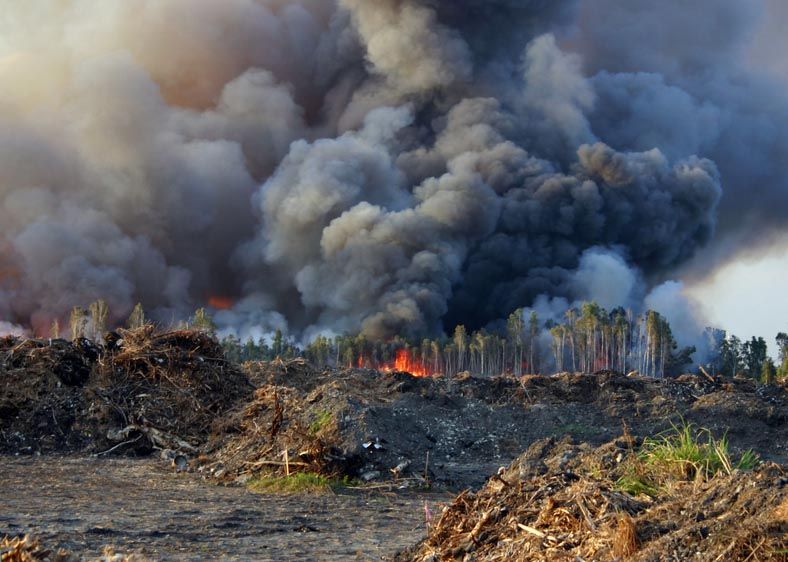
This degradation is primarily due to industrial agriculture and a market-focused land use technique called slash-and-burn. Slash-and-burn agriculture is a method whereby an area of forest is razed to the ground and then burned. In the short-term, this helps to transform nutrient-poor Amazonian soil into arable land for planting staple cash-crops crops like yucca, plantain, or maize.
While temporarily effective, this practice gradually depletes soil, killing microorganisms and impacting wildlife habitats. After just 2-3 years, farmers must shift to new land, leaving behind degraded and nutrient deficient landscapes.
A New Paradigm of Regenerative Agroforestry and Agriculture
Since 2012, the Permaculture Program at the Chaikuni Institute has worked to research and revive harmonious and productive methods of interacting with our environment. Permaculture (permanent agriculture) proposes a system of continuously cultivating and caring for land which regenerates and improves its quality.
Chaikuni shares research findings with communities to integrate the discoveries into their land use techniques and outlook. Reciprocally, Chaikuni learns from local communities. This co-creation of knowledge through applied, practical action is at the heart of Chaikuni’s approach.
Throughout the Peruvian Amazon, a chacra refers to an arable piece of land that is used for the cultivation of crops. A chacra integral can be interpreted as a holistic farm - one that is highly productive and biodiverse. Chaikuni's initiative promotes traditional Peruvian chacras integrales combined with a permaculture-inspired agroforestry method from Brazil called Agrofloresta.
Our permaculture hub is a place where local Amazonian farmers collaborate and learn with people from different corners of the world, exploring the intersection of traditional ecological knowledge and modern land use design, and developing a series of 'chacra integral' demonstration sites.
Chaikuni’s Ayni Ayahuasca and Chacras Integrales Initiative Works By:
- Reforesting in the Amazon with productive agroforestry systems
- Generating income for local Amazonian families in the short, medium, and long-term
- Developing sustainable ayahuasca production to meet increasing local and international demand
- Researching and producing knowledge on best permaculture practices
- Building food sovereignty
- Supporting market access for rainforest communities
- Educating on regenerative environmental practices
Core Objectives:
Phase One: Contribute to the recovery, regeneration, sustainable use, and management of the rainforest supporting 24 families in the lower Nanay river basin. Recover lost and degraded forest areas and promote sustainable use of the territory in four communities near the city of Iquitos and the Allpahuayo-Mishana National Reserve, an area which is characterized by a strong pressure on resources and an increase in deforestation due to the growing demand from the nearby city.
Phase One, key figures and expected outcomes:
- Promotion of sustainable use of up to 5,300 hectares of tropical rainforest through sustainable use agreements and community surveillance.
- Direct recovery of 24 hectares of degraded forest areas previously overused as agricultural livestock areas, providing 24 families with highly diversified, scalable production systems, resilience in the face of a changing climate and economic crisis, and examples to neighbors.
- An estimated contribution of 55,234.08 of CO2-eq captured over 20 years, mitigating climate change impact and benefitting the nearby Allpahuayo Mishana National Reserve by creating an additional buffer zone to the reserve.
- Direct participation of at least 268 people and direct and indirect benefits to 355 families
Phase Two: Extend the network of chacras integrales to the Ucayali region, working specifically with Shipibo, family-owned ayahuasca healing centers, local NGOs and indigenous federations (i.e. Oni Xobo, Coshicox, ORAU), and Shipibo families from communities on the river Ucayali.
Sustainable Ayahuasca Cultivation
Additionally, within this initiative, the Chaikuni Institute promotes the cultivation of banisteriopsis caapi, the ayahuasca vine, as an integral part of the chacra integral system, counteracting the overexploitation of the vine, generating vital income for local families, and helping to conserve the ancient healing practices of the Amazon.
Unlike other cash-crops in the region, ayahuasca is significantly more valuable and easier to sell in the local marketplace. Planting trees together with ayahuasca can offer lucrative, long-term solutions for Amazonian families while revitalizing degraded landscapes, stimulating carbon drawdown, and supporting biodiversity, preserving this sacred medicine and ensuring a healthy ayahuasca population in the region.
Since its inception, the Chaikuni Institute has planted over 1,800 ayahuasca vines on the land of the Temple of the Way of Light. Through outreach work so far, 9 hectares of chacras integrales are growing in four local communities, all of which have planted ayahuasca vine. Many locals are now starting to plant ayahuasca on their own properties, some with Chaikuni´s support and some out of their own initiative. Within the next year and a half, Chaikuni aims to expand to 24 hectares of chacras integrales.
Eco-Social Enterprise in the Amazon
By creating a living, thriving ecosystem where a wide variety of crops are planted and harvested at varying frequencies, this method provides regular, year-round income for local farmers and their families, generating a significantly higher yield than widespread slash-and-burn farming.
The multifunctional agroforestry landscape or chacra integral can provide long-term economic, environmental, and social resilience for local families and potentially the entire region, whilst offering an alternative to working for extractive industries that tempt locals with short-term high income to carry out destructive practices.
With the chacra integral method, forest plots are selectively cleared instead of slashing and burning the forest; while some are cleared to make space for desirable crops, others are preserved to nurture existing plants. Valuable habitats and species are preserved. Cut vegetation is left on the ground, mimicking the natural cycles of the rainforest ecosystem. Species that can coexist on mutually beneficial terms are planted next to each other. A wide, diverse variety of staple crops are planted together with fruit and timber trees, as well as medicinal plants, including the ayahuasca vine.
Our short-term goal is the creation of a network of 24 family-owned, community-based chacras integrales in communities near the Nanay river and Iquitos in the Loreto region of the Peruvian Amazon.
Our mid-term goal is to teach, support, and empower local farmers and communities in the Loreto and Ucayali regions of the Peruvian Amazon to acquire the skills and knowledge necessary to implement their own projects and diversify their income. Our aim is to promote systems that are economically and environmentally practical for the local communities that also ensure future supply of ayahuasca for local and international demand.
The Chaikuni Institute’s long-term goal is to inspire a widespread and highly effective new approach to small-scale farming for communities and by communities, creating a movement that regenerates the Amazon. The Chacras Integrales Initiative is designed to foster positive social, economic, and environmental change.
Chacra Integral Economic Model
Comparison of annual revenue/value of production of one hectare in a chacra integral vs. slash-and-burn

- Initial investment of 9,000 soles (~3,000 USD) for a one-family plot of approximately one hectare for seed and plant inputs, materials, tools, communal work expenditures, and technical assistance from Chaikuni
- Return on investment in 2-3 years, meanwhile providing food security and resources for the family caring for the land
- Total expected income over 10 years is 136,316 soles (~40,000 USD)
- Over 10-years, farmer income increases 10-fold with a chacra integral
- After 10+ years, timber can be harvested for additional income (often referred to as the “retirement” fund by local Amazonian families)
- * Slash-and-burn average annual income per hectare is ~3,250 soles
The multiple benefits of a chacra integral
Chaikuni’s projections indicate that the economic advantages of developing a chacra integral are more economically viable than the traditional monoculture model for growing staple crops such as yucca. Communities who adopt the chacra integral model will yield significantly more than their average harvest through slash-and-burn farming. However, the benefits of a chacra integral go far beyond its economic returns. The implementation of chacras integrales will:
- Create sustainable income for rural families
- Bolster food security and sovereignty
- Regenerate and transform degraded landscapes into food forests
- Counter deforestation trends
- Repopulate, preserve, and protect ayahuasca and chacruna
- Support the preservation of cultural traditions
- Drawdown carbon and mitigate climate change
- Increase biodiversity
- Create wildlife corridors
- Provision of ecosystem services from flourishing and reclaimed forest landscapes
- Reviving and conserving ancient ecological and spiritual practices
Standing in Solidarity with the People of the Amazon
As popularity in ayahuasca grows exponentially across the planet, we want to ensure that no matter where people are benefiting from the medicine, whether we are in the Amazon or anywhere in the world, that we appreciate the journey that ayahuasca has taken to reach out to us and that we reciprocate to its source and to the people who have cared for this sacred medicine for thousands of years.
Many thousands of people are looking beyond their personal narratives and realizing our fate and wellbeing is bound in the wellbeing of all creatures on Earth. Recognizing and respecting Ayni is the next phase of our collective awakening if we are to survive and evolve as a human community.
Now is a pivotal time in history where we are witnessing people across the world coming together to support indigenous peoples’ rights to protect their homelands, cultures, and traditions. Ayni Ayahuasca is listening to the voices of the indigenous people of the Amazon Rainforest and to the message of ayahuasca, calling us to action and to peacefully stand in solidarity together.
For those of us working closely with and who have benefited profoundly from ayahuasca, we feel strongly that we have a deep responsibility to respect, preserve, and protect the Amazon, its indigenous people, their autonomy and sovereignty, and their ancient healing traditions.
The time is now to unite our individual transformation with a global community that is truly united, through committed action with the people of the Amazon, and by supporting them to protect their profound healing traditions, medicines, and land – the birthplace of ayahuasca.

